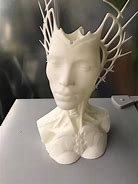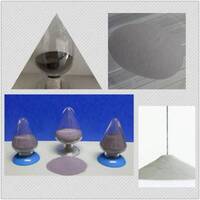**Cultivating Innovation: Choosing the Right Stuff for 3D-Printed Hydroponic Gardens**
(What Material For 3d Printing Hydroponics)
Hydroponics lets plants grow without soil. It uses water packed with nutrients. Now, 3D printing is changing how we build hydroponic systems. You can design custom parts at home. But picking the right materials matters. Not all plastics or filaments work. Some might harm plants. Others could crack under moisture. Let’s dig into the best options for 3D-printing hydroponic gear.
Start with PLA. It’s the go-to for beginners. PLA is cheap, easy to print, and comes in colors. But it has downsides. Water can warp PLA over time. Sunlight weakens it too. Use PLA for parts that stay dry. Think seedling trays or tool holders. Avoid submerging PLA in nutrient solutions. For short-term projects, it’s fine. For long-term setups, look elsewhere.
PETG is better for wet environments. It’s tougher than PLA. PETG resists water and UV rays. It won’t crumble after months in a humid grow tent. Print hydroponic channels or pipe connectors with PETG. It’s food-safe if certified. Check labels to ensure no toxic additives. PETG needs higher print temperatures. Bed adhesion can be tricky. A heated print bed helps.
Nylon is another option. It’s flexible and durable. Nylon handles vibrations and bends without breaking. Use it for parts that need to flex, like snap-fit joints or adjustable clamps. But nylon absorbs moisture from the air. Dry filament before printing. Store printed parts in sealed boxes. Otherwise, they’ll swell and lose shape.
ABS is strong and heat-resistant. It’s good for outdoor hydroponic systems. ABS won’t melt in summer heat. But printing ABS releases fumes. Ventilate your workspace. Warping is common. A closed 3D printer chamber reduces this. ABS works for structural parts like frames or pump housings. Avoid direct contact with nutrient solutions. ABS isn’t food-safe.
TPU is a rubber-like filament. It’s perfect for seals or gaskets. TPU creates watertight connections between printed parts. Imagine a custom-fit gasket for a water pump. TPU is squishy but tough. Print slowly. TPU strings easily. Clean up with a heat gun.
Resin printers offer smooth, detailed parts. Use plant-safe resins. Standard resins contain chemicals. These can leak into water and hurt plants. Look for “bio-compatible” or “aquarium-safe” resins. They cost more but protect your crops. Resin-printed parts work well for complex shapes like spiral water channels or tiny nutrient injectors.
Wooden filaments mix PLA with wood fibers. They look nice but aren’t waterproof. Seal prints with food-grade epoxy. Use wooden PLA for decorative plant markers or system covers. Keep them away from direct water contact.
Design tips matter too. Avoid sharp corners in water channels. They trap algae. Round edges improve flow. Add drainage holes to prevent clogs. Test prints for leaks before adding plants. Scale models first. Adjust gaps for tubing.
Modular designs save time. Print stackable plant pods. Connect them as your garden grows. Label parts with embossed letters. Track plant types without tags. Use parametric design software. Adjust sizes for different crops.
3D printing turns ideas into working hydroponic parts fast. Match materials to the job. PLA for dry areas. PETG for wet zones. TPU for seals. Keep plants safe. Experiment. Mix materials in one system. A tomato might need sturdy ABS supports. Herbs could thrive in PETG channels.
(What Material For 3d Printing Hydroponics)
The future of farming blends old and new. Seeds meet 3D printers. Kitchens become labs. Every tweak gets us closer to greener homes.
Inquiry us
if you want to want to know more, please feel free to contact us. (nanotrun@yahoo.com)

